|
Chapter 1. It was a stormy night. The leaves on the trees were making a shushing sound outside. Raindrops hit the windows and scattered down the glass. Lightning lit up the sky and thunder rumbled in the distance. Thankfully, there was a fire cracking in the fireplace and all of us, even Princess Messy, were tucked in to various pillows and blankets in Palmetto Mansion's cozy living room. “Tell us a story, Herbie,” said Tux. “One of those fables.” As a therapy cat, Herbie often participated in “Read to Me” events where children read books to him at the library. A pretty easy gig if you ask me. He just has to sit there and be petted. But he also got to know lots of stories that he could then tell to us. “All right,” said Herbie, stretching and then settling back in on the pillow. “I’ll tell you one called the Ant and the Grasshopper.” “I was hoping it would be about cats,” said Tux. Chapter 2. “One chilly day in late autumn, a family of ants was busy carrying grain into their home underground,” Herbie began. “They had worked all summer to collect the grain, and now they had enough to last them through the winter.” “What is grain?” asked Tux. “Something from a plant. Ants eat it.” “It doesn’t sound very good,” said Tux. “A grasshopper with a fiddle came upon the ants,” continued Herbie. “With a what?” asked Tux. “A fiddle. You know, a violin.” “Grasshoppers play the violin?” asked Tux. “They do in this story. Now just listen,” said Herbie with a stern look. “Having no food, the grasshopper was starving. He humbly asked for a bite to eat.” “Good thing the ants have all that grain,” said Tux. “May I continue?” said Herbie, raising his eyebrows. “Sorry,” said Tux. Chapter 3. “The ants were surprised. 'Haven’t you stored away anything for the winter? What did you do all summer?' “The grasshopper replied, 'I was busy playing my fiddle. I didn’t store away any food and now I have nothing to eat.' “The ants shrugged their shoulders. “Making music, were you? they cried. “Very well, now dance!” And they turned around and went on with their work.” Everyone was quiet. “The End,” added Herbie. “Well,” I said, breaking the silence. “That was a bit dark.” Chapter 4. Tux was quiet for a moment too, but then he brightened. “Oh, I get it!” he said. “They were going to share their grain with the grasshopper while he entertained them with his fiddle.” I was about to tell Tux that perhaps that was NOT what the ants intended when Messy spoke up. “Like how Herbie is telling us a story,” she said. “We need stories and music and art in our lives, especially when it’s cold and dark outside.” I had to admit she had a point. “I like that version better,” I said. “Tell us another,” said Tux. Chapter 1. We walked down the broad wooden steps of Palmetto Mansion and made our way across the wet lawn. The moon was big and full and gave everything in the night a soft white glow. A soft mist wrapped around the trees and rose up the trunks. “Why are we going to the graveyard at night?” Asked Tux. “It’s so creepy.” “Because it’s Halloween,” I said. “What is Halloween?” Tux asked. “Halloween celebrates the end of the harvest and the arrival of Winter on the first of November,” said Herbie. “Oh,” said Tux. “And many believe that tonight is the one night of the year when we can talk to the spirits,” he added. “I don’t think I want to talk to the spirits,” said Tux quietly. “Don’t believe everything that Herbie says,” I said. Chapter 2. We made our way to the center of the graveyard. There were cats of all colors and shapes assembled on the grounds. Up on the very tallest grave stone sat Messy, her green eyes shining and her fluffy tail swishing back and forth. Her fur was thick and full and made her seem twice as big as a normal cat. She was magnificent. “I know Princess Messy,” I said casually to the brown tabby seated in front of me. “We’re pretty good friends,” I added. “Really,” the cat replied, raising his eyebrows, looking me up and down with suspicion. She looked back up at the monument. Messy had cleared her throat and began to speak. Her normally low, scratchy voice was loud and echoed throughout the cemetery. “Tonight,” she boomed, “we honor our friends and family who crossed the Rainbow Bridge over the last year.” “What is the Rainbow Bridge?” whispered Tux. “It’s the bridge you cross when your nine lives on Earth is up,” I whispered back. “Oh,” said Tux softly. Messy continued. “Please call out the names of loved ones who are now waiting for us on the other side.” It was quiet for a few moments, and then the cats gathered in the graveyard began to call out names. “Mystery,” said one. “Mister Pickles,” said another. All along the circle of cats names were called out. Messy nodded at each one. “Pela.” “Grand Purr.” “Little Jenny.” Tux whispered again. “Where does the bridge go?” “Well, they say when you cross over, you are greeted by all those you have loved in your life who crossed over before you. They wait for you on the other side.” “Oh,” said Tux again. Chapter 3. They listened quietly until the last name was said. Messy looked out over the cats gathered before her. “We are here to remember those who now wait for us. We thank them for all they did on this Earth, whether it was being a good friend to us or a loyal companion to their human. And for those whose life on Earth was hard, they are now surrounded by the love of all of those who wait for them.” There were a few sniffles in the crowd. “Until we meet again,” Messy said. “Until we meet again,” the cats called out in chorus. Chapter 4. Tux moved in a little closer. “Uncle Dobie?” he said quietly. “Yes, Tux?” “If you cross the Rainbow Bridge before me, will you wait for me there?” I felt a sudden sting in my eyes. I blinked hard but now my eyes were wet. “Of course I will, Tux.” “Thanks,” said Tux. He looked relieved. He then leaped off the stone wall to join the other cats. I watched his black and white fur disappear into the mists. But despite the chill in the air, I was warmed by a glow in my heart. Chapter 1 . It was a beautiful Fall day at Palmetto Mansion. Yellow leaves were drifting down onto the green grass of the yard. A gentle breeze ruffled my fur. I was just getting comfortable in a patch of sun when Tux blurted out, “We need to go to a pumpkin patch.” I blinked. “A pumpkin patch?” I asked. “I heard the lady talking about it,” said Tux. “He said it isn’t really Fall unless you go to one.” Herbie lifted his head from his paws. “The season of Fall isn’t dependent upon our personal actions,” he said. “It’s dependent on the movement of our planet around the Sun.” “He meant metaphorically,” said Tux. “The idea of Fall as a construct.” I was starting to find this conversation confusing. “All right,” I said, sitting up. “Let’s go find Tux a pumpkin patch.” “You know where one is?” said Herbie. “Sure I do. There’s one just the next yard over.” “Really?” said Tux hopefully, getting up. “Huh,” said Herbie. “This I want to see.” Chapter 2. I led the way through the broken fence board to our neighbor’s garden. It was a collection of wooden frames with different types of vegetables growing in them. I gestured grandly with my paw. “Behold,” I said. Herbie and Tux looked at me blankly. “This is not a pumpkin patch,” said Herbie finally. “Sure it is,” I said. “Look at all the pumpkins.” I gestured grandly again. “These aren’t pumpkins,” said Herbie. “These are tomatoes. Do you even know what a pumpkin is?” “Of course I know.” Or I thought I did. I never really paid attention. “Aren’t they just round vegetables?” “Technically they’re fruit,” corrected Herbie. “Pumpkins are orange. Tomatoes are red,” added Tux. “What’s the difference?” I said. I tried to think of what the color orange looked like. “Um,” said Tux. “YOU are orange.” I looked down at my fur. He was right. “Well,” I said. “They’re both round.” “It’s not the same,” said Tux. “I know who we can ask,” said Herbie. Chapter 3. We found Messy in her usual spot, in the shade under the giant Magnolia tree. In the dirt. “Why is Messy always in the dirt?” whispered Tux. “She calls it Grounding,” whispered Herbie back. “Grounding?” “Yes,” said Herbie. “She says it’s a therapeutic technique that reconnects her to the earth. Something about electrical charges. She says it lowers her stress.” We came up to Messy. She was on her side, bits of leaves and soil clinging to her fur. “Messy,” I said quietly. She didn’t move. “Messy,” I said again, a little louder. One eye blinked open. “What,” she said. “Do you know where a pumpkin patch is?” She closed her eye. We waited. “Messy,” I said. She opened her eye again. “You’re still here,” she said. “Do you know about any pumpkin patches?” Herbie asked. “Pumpkins are orange,” I added helpfully. She hissed and sat up. A spider web was draped across her whiskers. I shuddered. “Why do you want to know?” “Tux wants to experience Fall,” I said. “He can’t unless we go to one.” “Although it’s really due to the angle of the sun,” added Herbie. “It’s symbolic,” emphasized Tux. She sighed and turned around. She lay down again, facing the other direction. “End of the street,” she said. “Thank you!” said Tux. “Enjoy your Grounding,” I said. She did not reply. Chapter 4. We followed Messy’s instructions to the end of the street. I was skeptical. I’d been here before. It was just a big field. But this time it was different. Now the field had been transformed. It was full of big green leaves and winding vines. And then we saw them. Large, round, and very, very orange. Finally. A true patch of pumpkins. Tux was right. It did feel symbolic. “Come on!” Tux shouted. “Let’s go!” He raced off, bounding into the leaves, his black and white fur appearing and disappearing into the green. I sat down just to take it all in. Herbie sat down next to me. “Maybe Tux is right,” I said. “It DOES feel more like Fall now.” Herbie licked his paw. “It definitely has a different feel than the tomatoes,” he added. My hometown high school had a large swimming pool that was open to the public each summer. It was shaped like an L and had three landings at different depths: It started off at four feet, gently sloped down to six feet, and finally, below a high diving board, sank to a final depth of thirteen feet.
As a kid, I would hold my breath and dive down to the bottom of the six foot section and let my eyes wander slowly over to the darkness of the deep end. Though weightless, catching a glimpse of that abyss made my stomach drop. You couldn’t see the very bottom until you had crept along to the very edge of the six-foot drop off, which of course I would do repeatedly. It was only then that you saw an added attraction: the presence of a very large drain at the bottom with a grate covering it. When I was a little older, I would hold my breath, and, if I swam hard enough, dive to the very bottom. On days I was feeling particularly brave (or foolhardy), I would briefly touch the grate and then race for dear life back up to the surface. I recently saw a video of a swimming pool that is quite a bit deeper. Called the Y-40 Deep Joy, it has a final resting place of 130 feet. That’s ten times (10! times!) deeper than the pool of my childhood. In fact, the Deep Joy is currently the deepest indoor swimming pool in the world (with a Guinness World Record to prove it). Located in a hotel in Padua, Italy, it features underwater caves for divers to explore and, like my school’s pool, platforms at different levels, including one at 4.3 feet and another at (gulp) 39 feet. There is a clear tunnel placed just under the water’s surface for visitors to watch scuba and free-divers dance in the deep. And of course, there is the deep end, which take the form of a narrow cylindrical well that plunges in semi-darkness to the very bottom. Search up this pool on the Internet and you will find a video of French freediver Guillaume Nery smoothly swimming through the depths of the pool. This video teases the presence of the bottom in brief snippets as Nery swims from platform to platform. It is only when he reaches the edge of the well that the camera finally faces it head on, allowing the abyss to fill the screen. Nery drops into this darkness like a ballet dancer, arms crossed over his chest, feet together pointing down. His eyes are closed and he looks strangely peaceful as he sinks to the bottom. You may find yourself holding your breath with him. You might also find yourself watching the video over and over, scaring yourself anew each time. Until, of course, they build a deeper pool. There is a waterway in Yorkshire, England that appears very much like a pleasant mountain stream. Rocks made soft with green moss crowd the edges, and the white water swirls and drops from the many small waterfalls along its length. Only six feet across is most places, you might be tempted to try to playfully jump across while picnicking with friends.
But this would be a terrible mistake, because it isn’t a stream at all. The Strid, as it is called, is actually a river. A river turned on its side. Upstream of the Strid you will start to understand. The water coursing its way through this false brook is actually the River Wharfe. Here it acts more like rivers you have known, expanding to a luxurious 30 -40 feet across. But at the Strid it is suddenly constricted by geology, and instead of spreading out, it has had to spread down. The “brook” at the top hides an immense and deep canyon filled with water. Over time the river has carved out channels and chasms under the rocks above. Any living thing that falls in is immediately dragged down in a vortex of currents and then thrashed and pummeled and ultimately trapped within its undercut banks. There is a claim that no one has ever survived a fall into the Strid, and while that is difficult to substantiate, there certainly have been many victims, one of them a possible future King of Scotland. In 1154 a young boy named William de Romilly decided to make the leap across only to fall in and disappear. His mother, Lady Alice de Romilly, was so beset with grief that she donated the land around it to the Bolton Priory monastery. William Wordsworth later immortalized the tale in his poem, “The Force of Prayer.” “The Boy is in the arms of the Wharfe, And strangled by a merciless force; For never more was young Romilly seen Till he rose a lifeless corpse.” The Mir Diamond Mine is the largest open-pit diamond mine in the world. At 1,722 feet deep and 3,900 feet wide, it is also one of the largest excavated holes in the world. I stare at pictures of this mine often because the sheer size of it boggles my mind. The little tiny boxes scattered around it are actually buildings several stories high. You can’t even see the people.
This mine is found in the Siberian region of Russia in the town of Mirny. Development started in 1957, and if the word “Siberia” means anything to you, you might imagine the challenges that were ahead. Winter there lasts seven months of the year during which the ground is frozen. And when I say frozen, I mean car tires would freeze and steel would shatter. Jet engines had to be brought in to thaw the ground to dig. In the short summer months, however, the ground softened and buildings would sink into the permafrost, necessitating that they be built up on piles. You might ask yourself why anyone would spend so much effort digging such a big hole in Siberia. Did I mention that this is a diamond mine? At its peak, 10 million carats of diamonds were produced each year. This was enough to worry another company who dug for diamonds, De Beers. De Beers had to buy diamonds from the Mir Mine to control the market price of the gem. But this wasn't enough— they wanted to know more about Russian mining developments. In 1976 Russia acquiesced to their plea to visit the mine, and an executive and the chief geologist of De Beers were granted visas to check it out for themselves. Once the pair landed in Russia, however, they found themselves forced to attend party after party until they were seriously worried that they would never get to see the mine. They were finally granted a short visit just before their visas expired. When I say a short visit, I mean they had literally 20 minutes. Well played, Russia. The big hole is no longer mined for diamonds. But get this: Now they mine under the hole, up to 1 km beneath it. That's almost worse. If anything can be accurately described as a “Hot Mess,” it’s the Elephant’s Foot, an oozing pile of radioactive waste deep in the basement of failed Reactor Number 4 at the Chernobyl Nuclear Power Plant. Often referred to as the deadliest object in the world, merely standing in the same room with the Elephant’s Foot for five minutes would kill you in two days.
The one way I don’t want to go is from radiation poisoning. Intense doses of these invisible rays make your cells fall apart. That’s not good. You basically slough apart from the inside out. And it hurts. Cue lots of vomiting and skin melting. The word “hemorrhage” gets thrown around a lot. So anyways, back to the Elephant’s Foot. When the Chernobyl plant blew its top in 1986, the nuclear reactor core got so hot that it literally melted down. It melted the steel and concrete containing it and flowed down and out of the bottom of the reactor vessel like the worst kind of lava. It pooled in the basement below as a new substance nicknamed “corium.” When it was discovered months after the disaster, its blobby shape resembled the foot of an elephant and this unique sample of corium got its name. While no longer as hot as it was over thirty years ago, you still don’t want to visit it. Down from its peak radiation of 10,000 roentgens per hour (or how much radiation you would get from 4.5 million chest x-rays), it will still kill you if you spend over an hour with it. And it’s still melting. Of the 600,000 “liquidators” who worked at the Chernobyl site after the disaster to contain the mess, more than 30 died within a few months of radiation poisoning. We owe a lot to all of these people for helping to contain one of the worst human-caused disasters of all time. Imagine taking a walk out in the hot desert of Nevada. The rocky dirt trail crunches underneath you. The sun is bright and hot and reflects off clumps of hard rock so that you have to shield your eyes with a flattened hand. All around you everything is beige, the color interrupted only by sage green bushes scattered across the valley floor and the grey-blue mountains rising up beyond.
Scrambling down some boulders in a narrow gully you come across a hole in the ground, a small rectangular pool of clear, deep blue water. There is a short algae-covered shelf of rock jutting out across a third of the pool, so you roll up your jeans and step in. The water is warm and welcoming, and as you slosh forward, you get to the shelf’s end. Peering over the side you see shimmering shelves of blue and white and green. You decide to take a dip. As you ease yourself into the water, you find a need to tread water, as the sides of the pool are vertical rock, and your feet don’t touch the bottom of this narrow oasis. In fact, your feet won’t touch for at least another 400 feet down. You are now dangling on the surface of a column of dark water over 40 stories high. Devil’s Hole is the entrance to a vast limestone chasm whose depth is still not known. United States Geological Survey cave divers sank through the inky blackness to the 436 feet mark in 1991, and with their powerful flashlights could still see for another 150 feet below before it curved out of sight. According to professional diver Jim Houtz, “at the end of the tube it opens again into something else. We don’t know what the next room is, or if it’s a room at all. It’s like infinity.” The unique nature of Devil’s Hole allows it to perform another cool trick: It serves as an indicator of distant seismic events. An earthquake occurring thousands of miles away will shake the vast reservoir of water deep within Devil’s Hole, and having nowhere to go but up, the pool will violently climb the rocky sides of the cavern only to be sucked down again. This occurs over and over again, appearing very much like a toilet being flushed. Unfortunately for those enticed by bottomless pits and the claustrophobic abyss, Devil’s Hole is off limits to the public, as it houses one more secret: It is home to the tiny, critically endangered Devil’s Hole Pupfish. In fact, it is the only home of these little bluegrey (male) and brown (female) fish, whose total population hovers around one hundred. These pupfish, or C. diabolis, are extremely endangered, and so their sensitive habitat is surrounded by a tall prison-like barbed wire fence. You can walk out along an enclosed walkway to view the hole from above, but that is as close to the bottomless void as you will be able to get. One night in February, 2013, after Jeff Bush had gone to bed, a sinkhole opened up under his bed. The rest of his family was preparing to go to sleep when they heard what sounded like a car crashing into their house. Jeff’s brother, Jeremy, raced to Jeff’s room after hearing him call out, but all he found was a hole that had swallowed Jeff’s bed, his dresser and his TV. Only the cable wire dangled from the wall into the darkness.
Sinkholes are nature’s dirtiest trick. It takes the ground beneath our feet and pulls it out from under us so that we can fully inspect the horrifying void while simultaneously falling into it. Sinkholes are also sneaky. They usually develop under the earth silently for years and years until the ground above can no longer support itself, and whatever unlucky thing that is unknowingly sitting on top is rudely dropped into an abyss. Sinkholes often form where rock such as limestone is in abundance, as this rock dissolves in water over time. In states like Florida (which is built on limestone with a veneer of clay on top), sinkholes are so ubiquitous that insurance companies are required to provide homeowners insurance coverage that includes damage from “catastrophic ground cover collapse.” Catastrophic ground cover collapse is one of the things I like to think about when I go to sleep at night. The idea behind a spillway is simple: Prevent water from rising too high in a reservoir. Much like the overflow tube in your sink or bathtub, the spillway of a dam allows water that has reached a critical height to be diverted into an enormous drain to be released into the river below. A Bell-Mouth Spillway, so named due to its shape, is unique in that it is placed within the reservoir itself. In dry periods, it merely looks like a ring-shaped column of cement protruding out of the water. But all of this changes when the reservoir starts to fill.
Once water levels rise high enough to reach its top, this type of spillway actually disappears. The water flowing over the edge is the only indication of its presence. It becomes a black hole in the midst of tranquil waters. If this occurs near a roadway, you will often see onlookers crowding near to see it in action. But the inner workings of this type of spillway are hidden deep within the black depths of the dam. You can’t see where it goes, but you know it’s deep. Another part of the horror of this type of spillway comes from its uncontrolled operation. There is no mechanism preventing it from starting operation. Once water levels reach the top of this drain, the water goes in. No technician turns it on, no gate prevents objects from flowing in. There’s no intelligence at work here; it is simply a giant drain in a lake. At least one person has been pulled into a Bell-Mouth Spillway and drowned. In 1997, a woman succumbed to the so-called “Glory Hole” in Lake Berryessa, in Napa, California. One account says she was fully clothed and distraught when she entered the lake. She then either swam or was pulled toward the opening of the spillway. As she was swept up and over, she grabbed onto the concrete ledge and clung there for twenty minutes, slowly losing her strength as the power of the water flowed around her. Onlookers could only watch until, finally, she disappeared inside. Her body was found in the river below, having made the journey completely under the dam and out the spillway’s exit. My very first diorama was of a movie theater, made in sixth grade. I drew each row of seats and in the back was the movie screen. (I forget what was showing in my make-believe theater.) It was included at the local public library for a display they had of kid’s art, which was cool, but then my friend’s dad took it home and threw it out.
My second one was this one that I do amazingly still have, of “The Old Man and the Sea.” For this current series, I made little dioramas inside 5x7 card boxes. For each one, I started with a picture idea that would look good in three dimensions. That means I needed a good “frame” around the image, and then some additional parts that will look good poking out. This is sometimes easier said than done. I’ve had to discard a number of picture ideas as they didn’t provide places to “pop out.” Then you need to draw the layers. At first I just drew the image as a flat drawing and then cut out the parts that would be in front. This is how I did the one of the Train Car. I soon realized that this made it harder to give the illusion of depth, as you wouldn’t really be able to see “behind” the layers. I began to instead draw each layer separately, resulting in several drawings for each final piece. "Scary Places, Illustrated" is now available!
Twenty-six pages of stuff that scares me, all illustrated in three dimensions of paper and photographed for this book. Throughout this book you will find three-dimensional paper dioramas depicting nine places that scare me. Cue deep-water caves, drains in lakes and ridiculously deep swimming pools. The project began while I was exploring online groups devoted to phobias of the ocean, submerged objects and oversized structures. Many of the photos shared enthralled me to the point that I felt compelled to draw them. To fully immerse myself in my fears, I decided to make them 3D. I printed, cut and pasted each drawn layer onto foam core and placed the resulting diorama into a cardboard frame. Photographs of these dioramas span the pages of this book. To complete the experience, I wrote up a detailed description of each scary place. Some of these places are of man-made structures, while others occur naturally through quirks of geology. But all of them thrill me with a deep and primal fear. I hope you enjoy viewing these pieces as much as I did in creating them. Enjoy! MaryRose |
Stories |
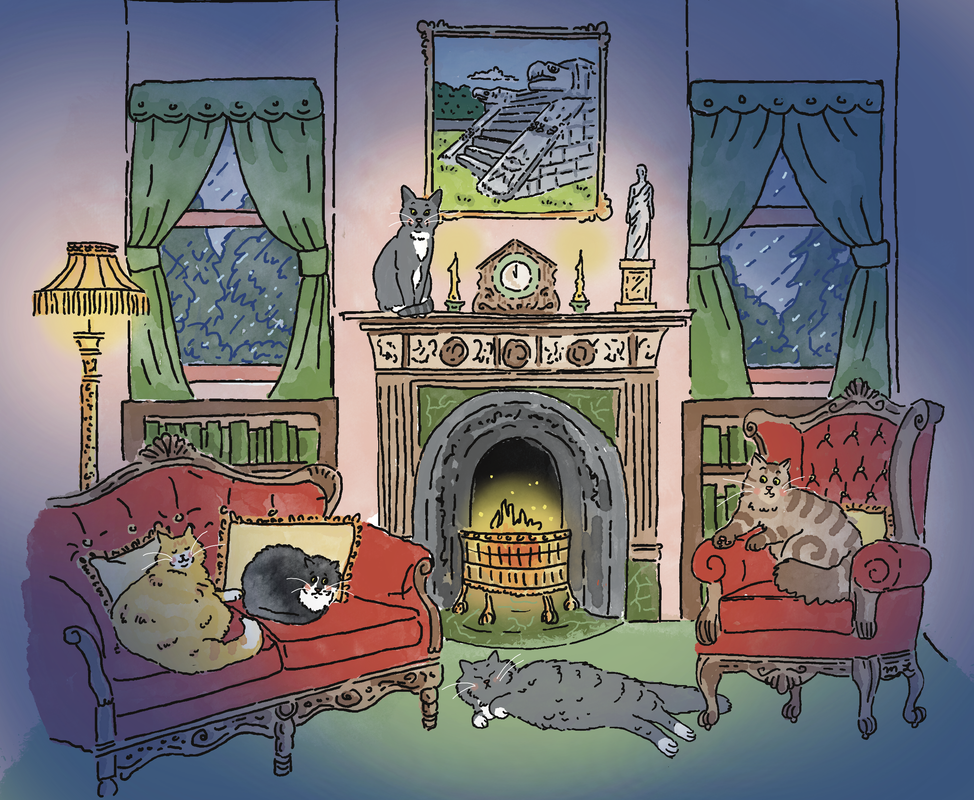

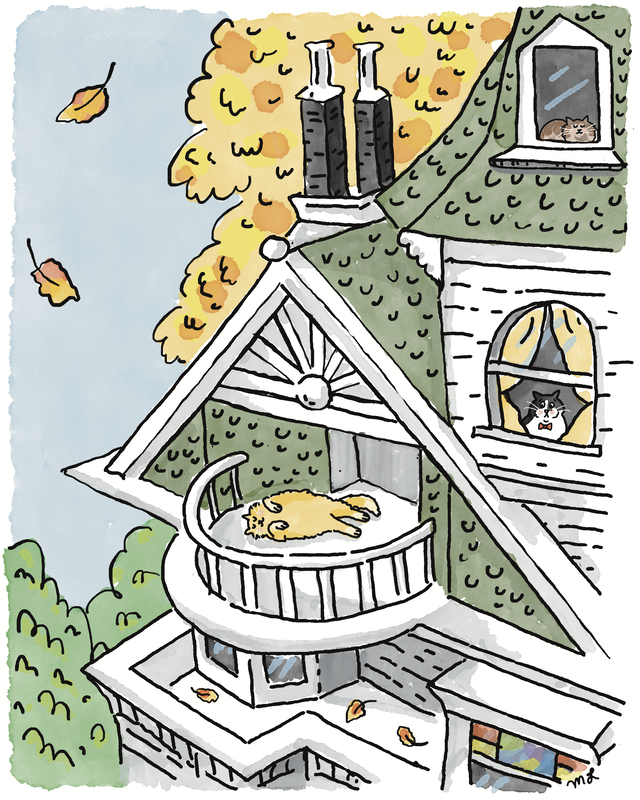
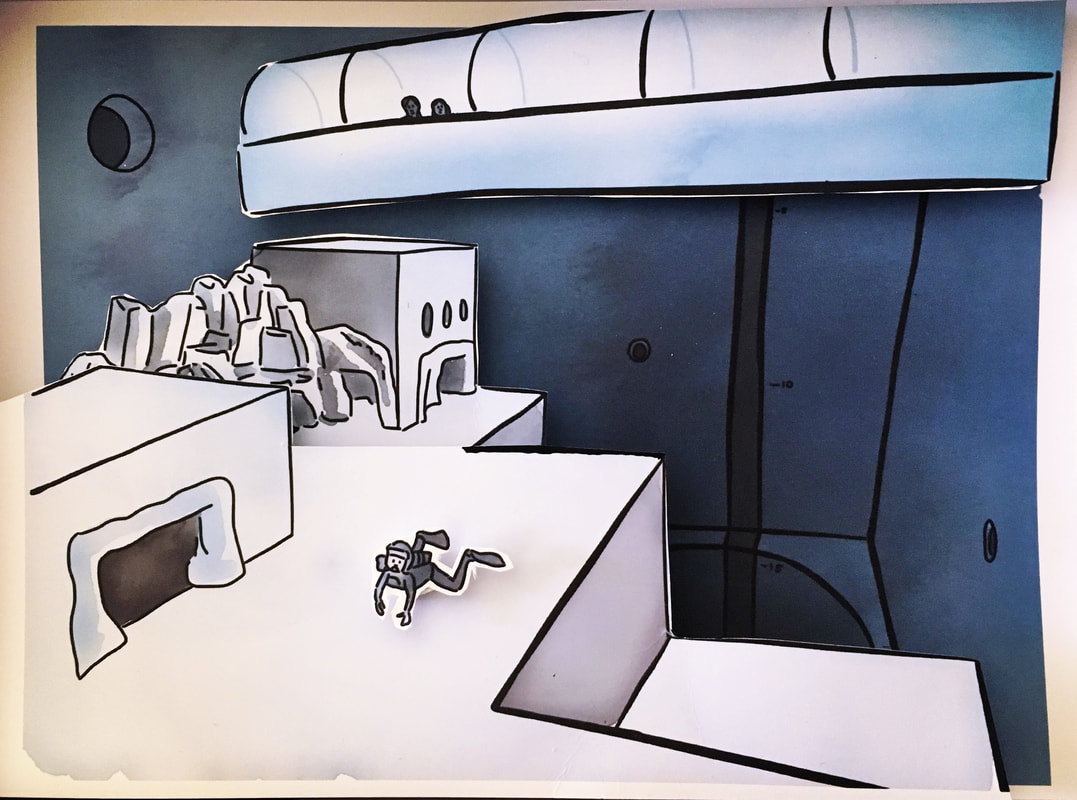
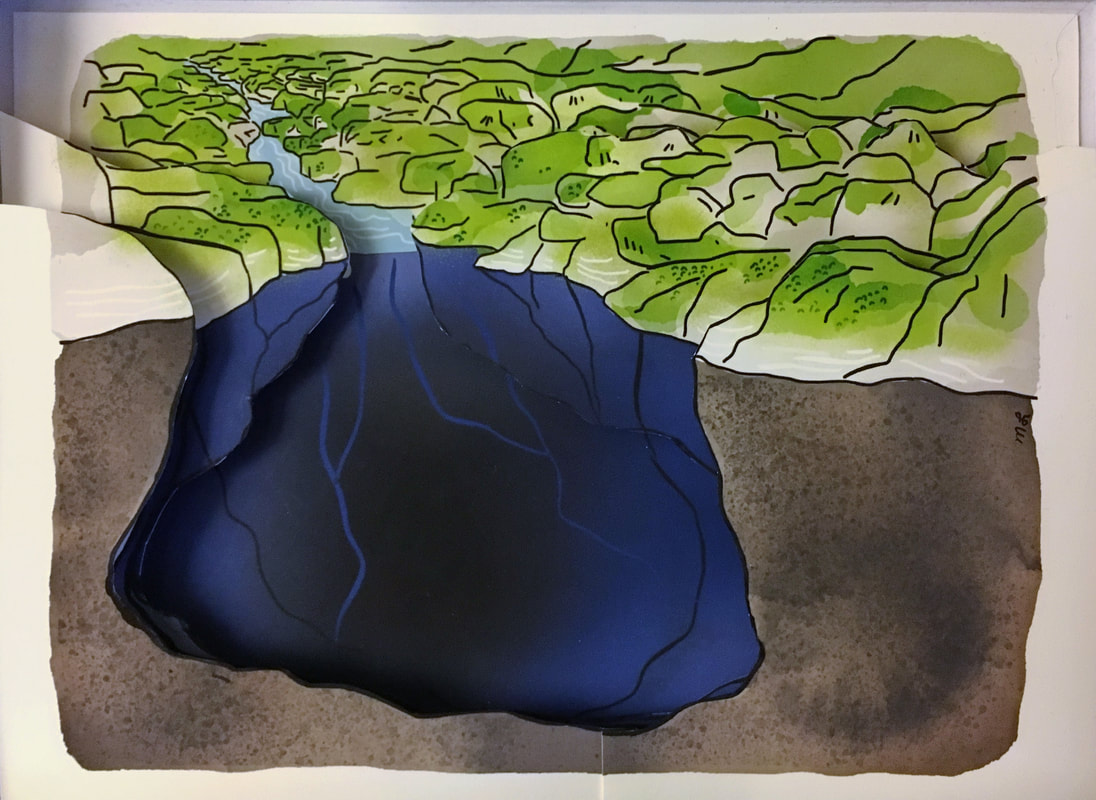
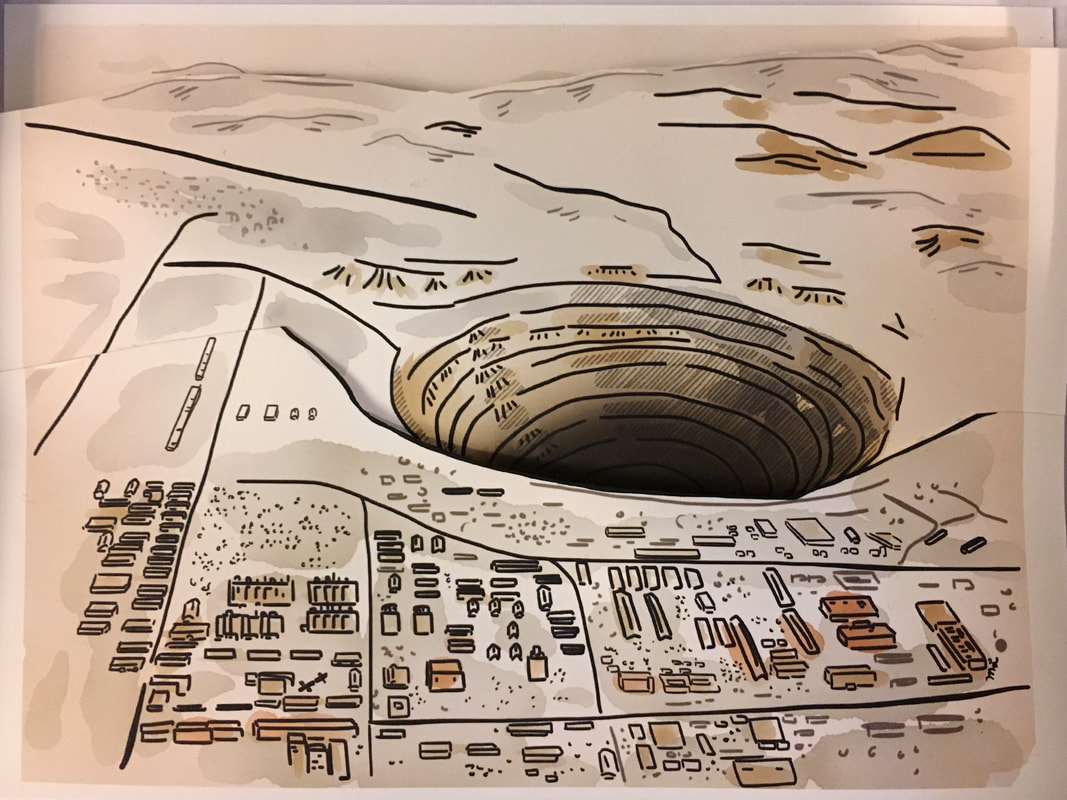
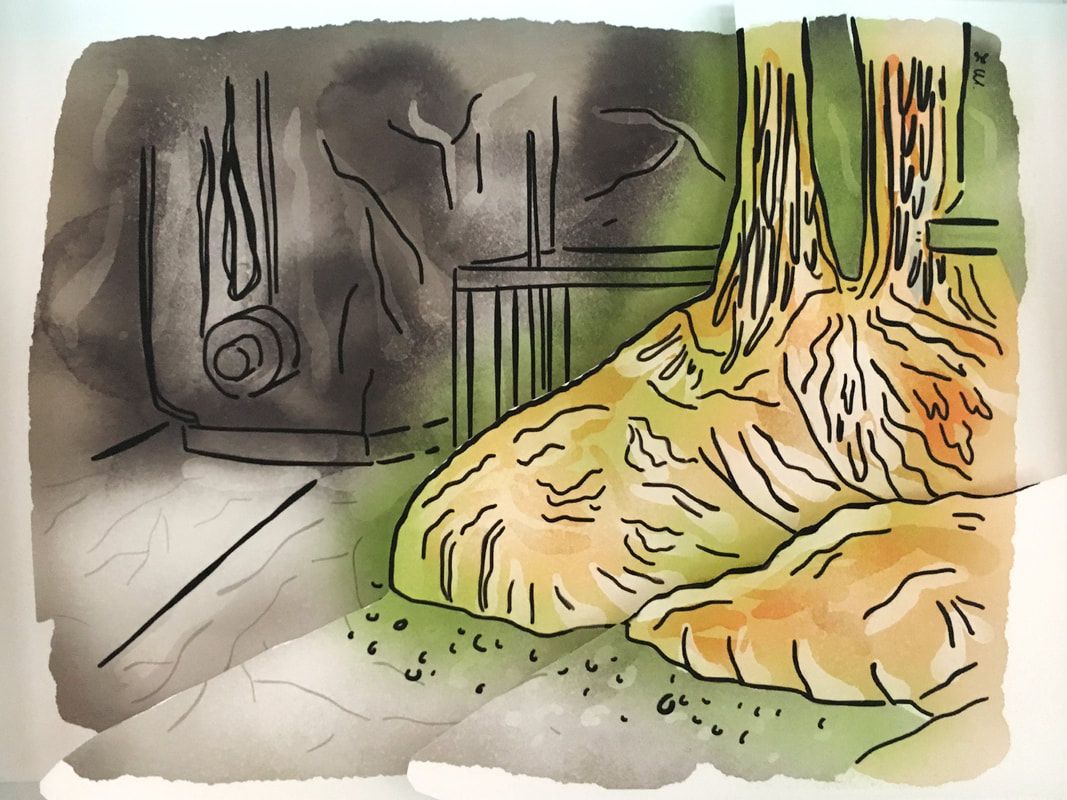
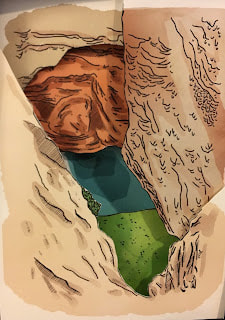
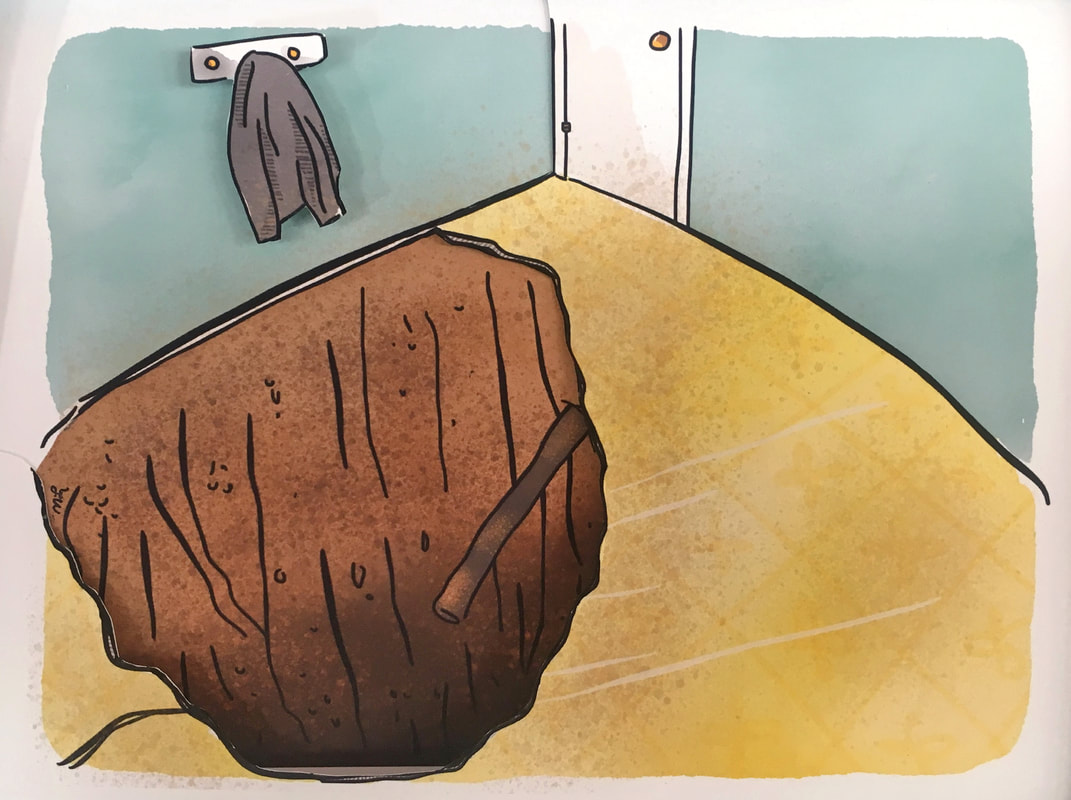
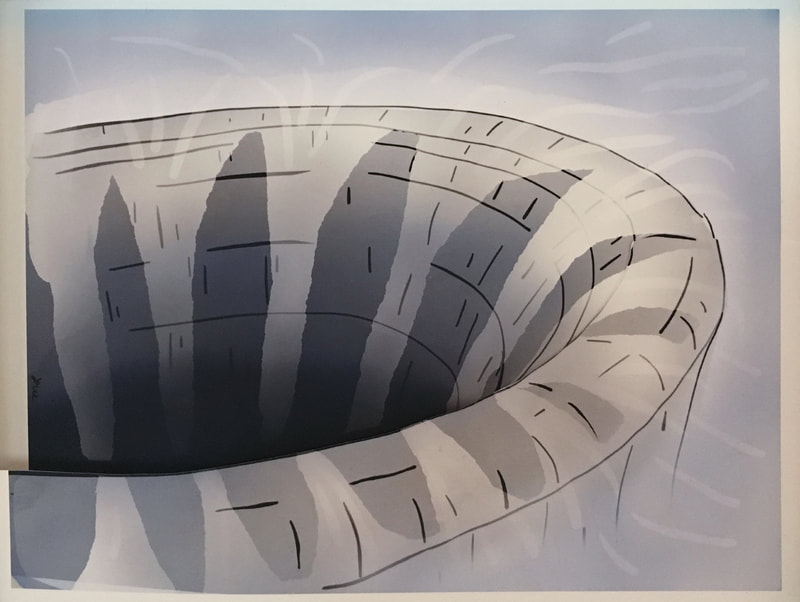
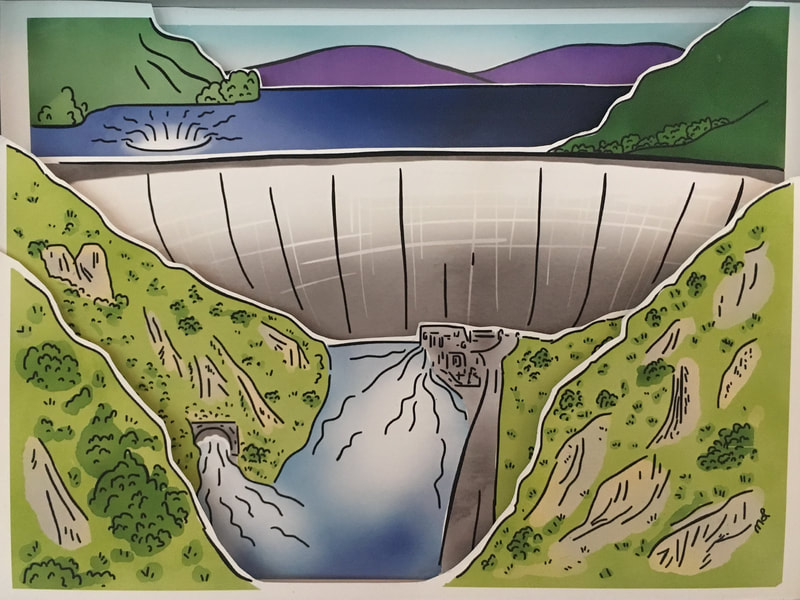
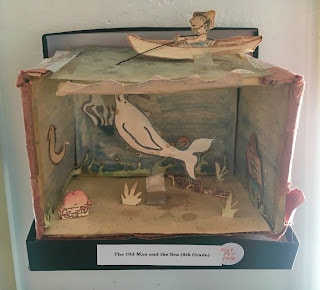
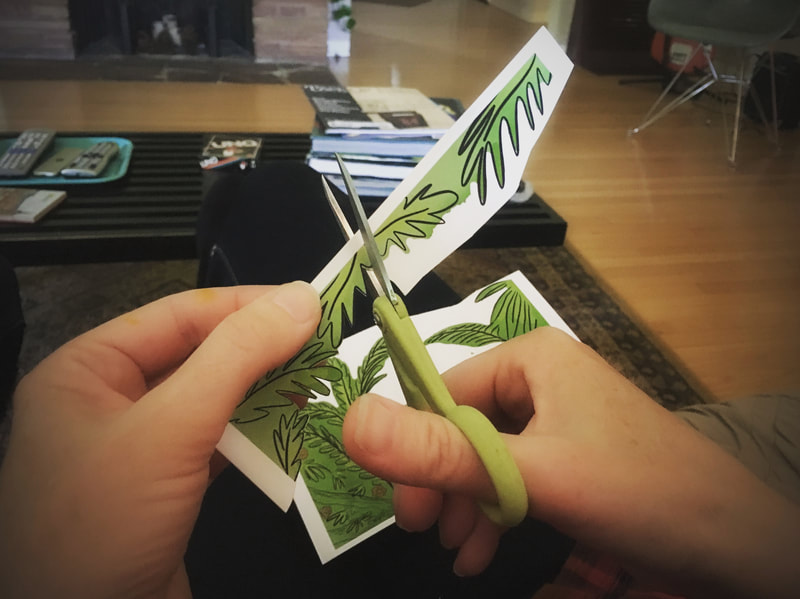
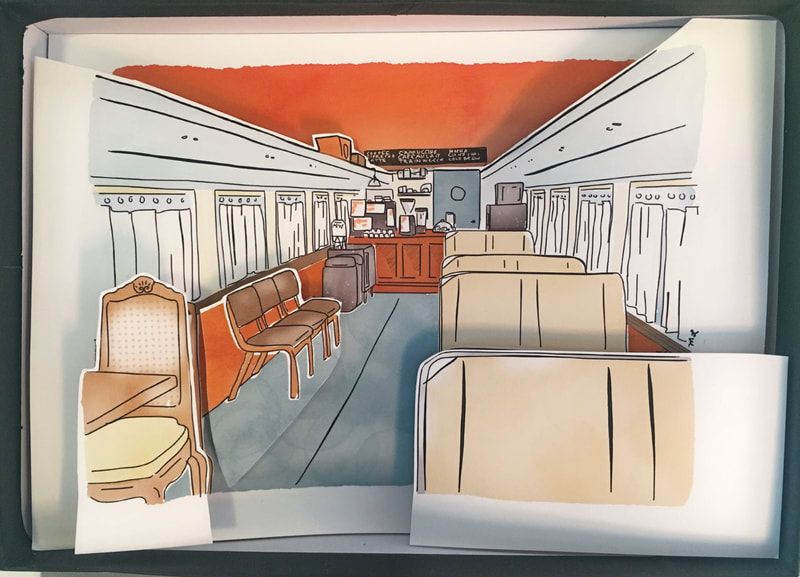
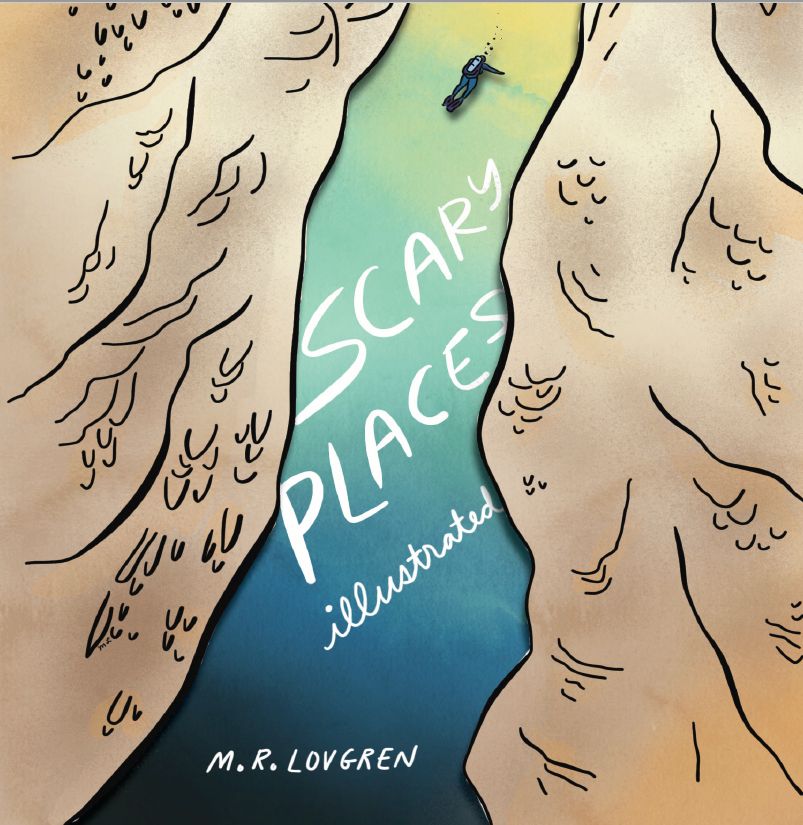
 RSS Feed
RSS Feed